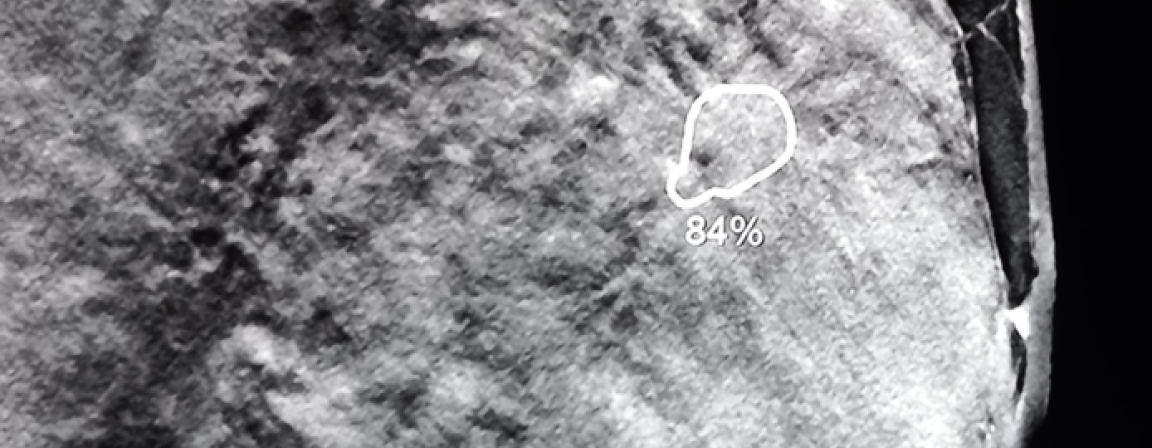PINK OCTOBER: artificial intelligence for breast cancer screening
Brussels, 29 September 2023 – This year as every year, October is the month to boost awareness of breast cancer. Breast cancer affects more than 10,000 women a year in Belgium, making it the number one cause of cancer deaths among women. Nevertheless, the likelihood of surviving breast cancer is high if the disease is detected at an early stage. The use of artificial intelligence in breast cancer screening is a significant aid for the radiologists at our hospitals. The Brussels University Hospital (H.U.B.), a grouping of the Jules Bordet Institute, the Erasmus Hospital and the Queen Fabiola University Children’s Hospital, is more than ever committed to supporting the fight against breast cancer and continuing to innovate thanks to the new intelligent technologies.

More effective early screening thanks to artificial intelligence
Whether individually through self-massaging of the breasts, a check by the gynaecologist or on the occasion of the Mammotest campaign, the importance of breast cancer screening is undeniable. Since last year, the Brussels University Hospital (H.U.B.) has added a new tool to its arsenal: Artificial Intelligence (A.I.). A genuine aid for the radiologist in reading an image, AI makes it possible to give a risk percentage for malignancy when consulting a lesion image.
Artificial intelligence was developed through deep learning : images of positive and negative cases are fed into a software program so that it can learn to identify a cancer and differentiate between a cancer and a benign lesion. With each new case, AI analyses the images of the patent in question and the stored images and on this basis is able to give a positivity risk percentage.
An aid to supplement the radiologist’s eye
AI is also very effective in reading a 3D mammogram (tomosynthesis). This permits a better diagnosis of dense breasts that sometimes pose a problem for radiologists as they are very complicated to analyse.
“Artificial intelligence could also be a useful aid in mass screening as, on the basis of the mammogram and age, it is able to calculate the risk of developing a breast cancer within the next two years. This will make it possible to identify patients who need closer monitoring as they have an increased risk of developing cancer,” stresses Dr Sy, Head of Clinical Imaging for Women at the H.U.B.
An article published this summer in the prestigious medical journal The Lancet estimates at 20% the number of additional breast cancer cases detected by artificial intelligence compared to a conventional double reading by two experienced radiologists. However, although AI detects a lot of cancers, it can also give positive readings of benign lesions. As Dr Sy explains: “Artificial intelligence does not replace the work of radiologists but is a useful tool that will assist them by supporting them in their diagnosis and also by sometimes drawing their attention to the presence of other associated lesions that may have escaped their notice.”
“AI also saves time as it reduces the mammogram reading time while permitting a better detection and consequently more rapid action for patients who need it.”
What hopes for the future?
While artificial intelligence is already being used increasingly to read mammogram images and for tomosynthesis, the future promises many more applications. Studies are being carried out to extend its use to reading MRI mages. In this application, AI will above all be useful for women with a high risk of breast cancer whose cancer is atypical and more aggressive. It will permit more rapid action in such cases. In the medium and long term we hope that AI will also be able help better identify those patients who will require chemotherapy.
Artificial intelligence is strengthening the arsenal of tools, treatment and care already in place at the H.U.B. for the early detection of cancer and will thereby increase the chances of a cure for each and every patient.